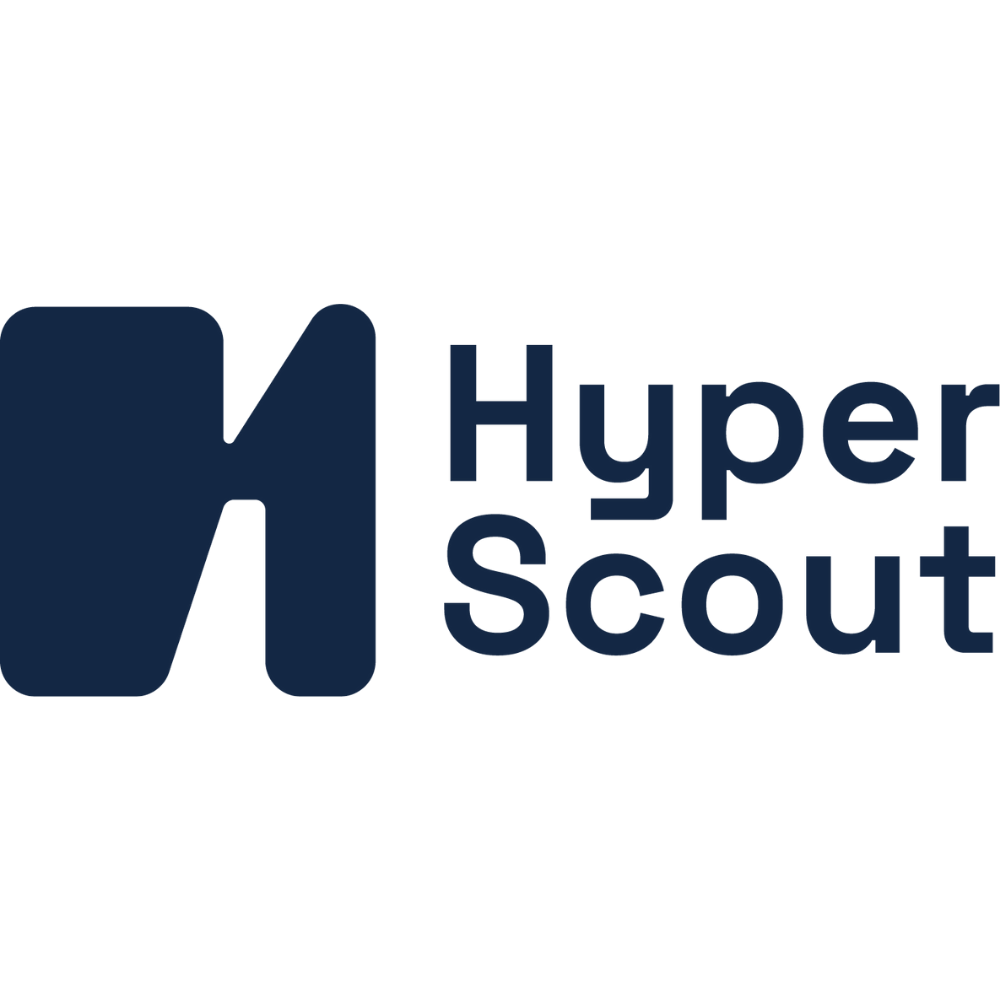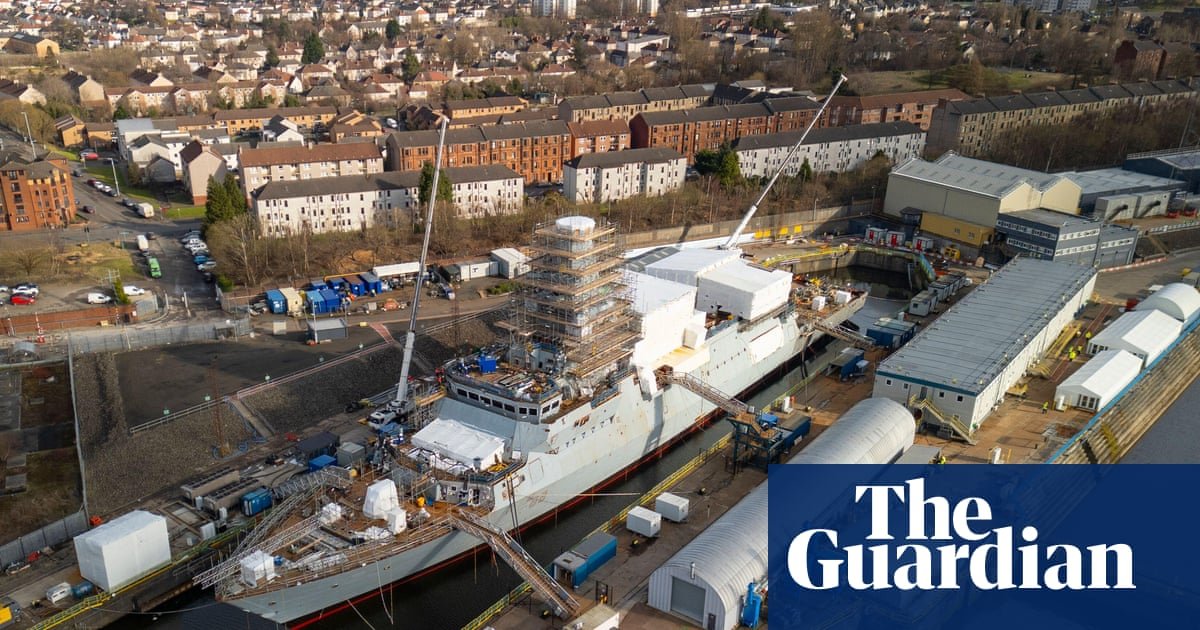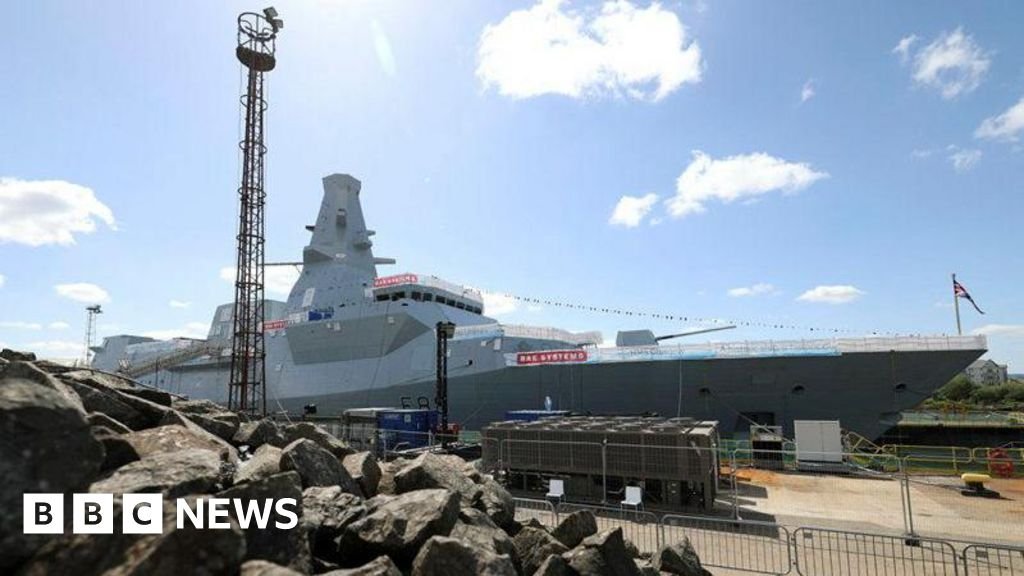Business
Reimagining Fashion Fairs: How Hyperscout is Using AI to Reinvent the Business of Matchmaking

5
Fashion trade fairs have long been an industry mainstay: a flurry of handshakes, hurried booth visits, and hopeful encounters in buzzing exhibition halls. But as the cost of attendance rises and ROI becomes less certain, the format many once considered essential is facing a relevance crisis.
That is why Hyperscout, a B2B tech fashion platform launched recently by Dutch fashion veteran Jan Brabers, is on its way to make waves across Europe. Fresh off its showcase at Pitti Uomo, the world’s most influential menswear fair, Hyperscout is offering a radical rethink: use AI-powered matchmaking to bring the right buyers to the right brands, before, during, and after the fair.
(Courtesy)
“Right now, most fairs are still selling square meters and hoping for foot traffic,” Brabers says. “But brands need results instead of just jangling. Hyperscout is here to deliver exactly that.”
Brabers is no stranger to the inefficiencies of the current system. With nearly two decades in global fashion business development, including buying, brand building, and market expansion, he’s experienced the old model from every angle.
“The ROI for brands attending a tradeshow is still largely a gamble,” he explains. “You fly across the world, pay a small fortune, and hope the right buyer walks past your booth. Meanwhile, the data powering those connections is outdated or non-existent.”
That’s where Hyperscout steps in.
Powered by a proprietary AI engine, the platform profiles and ranks millions of fashion players globally using over 15 commercial and aesthetic variables, everything from product category and price point to target audience and brand DNA. It then delivers precision matches, connecting retailers, brands, and sales agencies through a digital interface that continues working well beyond the trade-show floor. The goal is to turn every interaction into a curated, purposeful exchange and every trade-show into a smart sourcing experience.
Hyperscout’s credibility got an early boost when it was picked up at the e-P Summit in Florence, a prestigious intersection of fashion and tech. Shortly after, the company debuted at Pitti Uomo, where it was used to match exhibitors with qualified buyers ahead of the show.
Pitti Uomo is currently trialing Hyperscout in-house in preparation for their winter show. The hopes are that, instead of relying on serendipity, exhibitors using Hyperscout will have tailored meeting schedules with vetted buyers whose profiles match their commercial goals. For retailers, it will provide previews of aligned brands, allowing for efficient planning and meaningful discovery. “With AI, we’re not removing the human touch,” Brabers stresses. “We’re enhancing it. The real value happens when you meet the right person, not just any person.”
For fashion fairs facing questions about relevance and cost justification, Hyperscout offers a new value proposition.
Organizers can now quantify ROI with post-show metrics, track engagement trends, and expand their global reach by enabling virtual matchmaking. For councils and associations, it’s a way to support local fashion ecosystems by helping designers find international partners without the prohibitive cost of traditional market entry.
“Governments are now interested too,” Brabers notes. “They see this as a way to promote ‘Made in Britain’ or ‘Made in Italy’ in a much more scalable, data-driven way.”
And for young brands, often the most under-resourced players in the market, Hyperscout could be game-changing. With tools for identifying the right retailers and planning market expansion strategically, even a small label without PR muscle or showroom access can chart a viable path toward growth.
“Too often, these brands pour their budget into one big shot, like a showroom in Paris, and just hope for the best,” says Brabers. “We give them something better: proof of concept, market fit analysis, and a smarter way to build wholesale traction.”
The platform isn’t just a tech layer. It’s part of a bigger vision to democratize access to the fashion business. With its app launching this fall, Hyperscout will be available not only to fair organizers and councils but also directly to brands, agents, and retailers. Brabers says the pricing model will remain accessible: “We want as many users as possible. More diversity means better matches.”
Crucially, Hyperscout is not a data-harvesting machine. Contact details aren’t sold or mined for cold outreach. “This isn’t about spam,” Brabers says. “It’s about real conversations with the right people.”
By automating the research and profiling that once took teams weeks or months, the platform allows users to focus on what actually moves fashion forward: creative storytelling, relationship-building, and, yes, touching the fabric.
“Fashion will always need that moment of human connection,” Brabers says. “Our job is to make sure that moment happens between people who are truly meant to meet.”
As the platform continues rolling out with Pitti Uomo and negotiates further deals with global fashion councils, Brabers is focused on scale with purpose. Strategic partnerships, expanded datasets, and smarter onboarding processes are all in motion. But his mission remains clear. “Everyone in fashion is looking to lower risk, cut costs, and expand reach,” he says. “Hyperscout doesn’t replace human instinct. It strengthens it with data. And that’s how we build a more resilient, creative, and connected industry.”
Presented by: APG
Business
Start Your AI Agency Launches 90-Day Global AI Training Program to Build Lucrative AI Service Businesses
Start Your AI Agency, under the leadership of CEO Greg Squibbs, has announced the 90-Day global AI training program that enables individuals to build lucrative, location-independent businesses by using artificial intelligence.
Dubai, United Arab Emirates–(Newsfile Corp. – August 31, 2025) – Start Your AI Agency has launched a 90-Day global AI training program to build lucrative AI service businesses. The company’s core offering is a free training program that introduces the proprietary AI Layering Strategy – a system inspired by proven practices from leading global tech innovators. This model allows entrepreneurs to streamline their outreach, automate service delivery, and operate businesses 24/7 from anywhere in the world without the need for complex software or large teams.
CEO Greg Squibbs
To view an enhanced version of this graphic, please visit:
https://images.newsfilecorp.com/files/8703/262414_87e4e1ac64487862_001full.jpg
For digital entrepreneurs looking to launch and scale AI-powered service businesses, Start Your AI Agency 90-Day training program focuses on actionable steps and replicable systems that are accessible to them with no prior experience in AI or coding. By simplifying advanced AI technologies and integrating them into everyday business operations, the program helps to bridge the gap between innovation and execution.
The program supports a wide range of professionals, including freelancers, consultants, and business owners, who are seeking to modernize their services using AI.
Greg Squibbs, a long-time advocate for technological innovation, emphasizes the importance of AI education for long-term success. As he has stated, “Artificial intelligence, automation, team building – if you don’t understand it – learn it. Because otherwise, you’re going to be a dinosaur within three years.”
Furthermore, Start Your AI Agency’s program helps individuals seeking to transition from traditional employment, entrepreneurs aiming to scale digital operations, and professionals interested in integrating automation into their service-based businesses.
About Start Your AI Agency:
Start Your AI Agency is a global training platform dedicated to helping individuals build and scale AI-powered service businesses. Founded with the vision to democratize access to artificial intelligence, the company provides step-by-step training, tools, and automation systems that enable entrepreneurs to launch high-profit, location-independent agencies. With a focus on simplicity, scalability, and real-world application, Start Your AI Agency has become a trusted launchpad for thousands of digital entrepreneurs worldwide. Under the leadership of CEO Greg Squibbs, the company continues to drive innovation and empower the next generation of AI-focused business owners.
For more information, visit at https://www.startyouraiagency.com.
Media Contact:
To view the source version of this press release, please visit https://www.newsfilecorp.com/release/262414
Business
Norway signs £10bn deal for anti-submarine warships built in UK | BAE Systems

Norway has agreed a £10bn deal for anti-submarine warships that will be built in the UK, as the two countries plan joint operations in northern Europe to deal with increased Russian activity.
The Ministry of Defence (MoD) said the agreement to build Type 26 frigates was the UK’s biggest ever warship export deal by value, and Norway’s biggest defence procurement deal.
It said that overall it would provide a £10bn boost to the UK economy and support 4,000 jobs across the UK “well into the 2030s”.
The Type 26 frigates will be built at the BAE Systems shipyards in the Govan area of Glasgow, which employ 2,000 staff and are already constructing eight of the warships for the Royal Navy.
“This £10bn deal is what our plan for change is about,” said the UK prime minister, Keir Starmer. “Creating jobs, driving growth and protecting national security for working people. The export of our world-leading Type 26 frigates will do exactly that, supporting well-paid jobs up and down the United Kingdom, from apprentices to engineers.”
It is estimated that the shipbuilding programme will support 432 businesses, including 103 in Scotland, 47 in the north-west of England and 35 in the West Midlands.
The deal also signals a strengthening of a long-term strategic relationship with Norway, as part of which a combined fleet of 13 frigates will operate jointly in northern Europe.
Eight of the frigates will be British and “at least” five will be Norwegian, with the joint operation designed to “significantly strengthen Nato’s northern flank”.
“This historic defence deal deepens our strategic partnership,” said John Healey, the defence secretary. “With Norway, we will train, operate, deter and – if necessary – fight together. Our navies will work as one, leading the way in Nato, with this deal putting more world-class warships in the north Atlantic to hunt Russian submarines, protect our critical infrastructure and keep both our nations secure.”
Concerns over critical infrastructure around Europe have been raised on multiple occasions in the last year, after the alleged sabotage of the Baltic gas pipeline and undersea internet cables between Finland and Estonia.
Norway was the only other country to participate in the UK carrier strike group’s full deployment this year, and it also collaborates with the UK and Nato partners to safeguard critical undersea infrastructure in northern Europe.
“Norway and the United Kingdom are close allies with common interests and strong bilateral ties,” said Jonas Gahr Støre, Norway’s prime minister. “I am confident that the strategic partnership with the UK for purchasing, developing and operating frigates is the right decision.”
The Scottish secretary, Ian Murray, said the decision showed the “tremendous success” of Scotland’s shipbuilding industry and was an example of another “defence dividend” for the country.
The Type 26 frigate features sophisticated weapons, and advanced sensors and communications. Its design enables the warship to be upgraded to “counter emerging threats”, according to the MoD’s statement announcing the deal.
Charles Woodburn, the chief executive of BAE Systems, said: “The Norwegian government’s decision reflects its confidence in British industry’s ability to deliver a superior anti-submarine warfare platform, together with systems and equipment, that will support its future maritime security and reinforce its position within Nato.”
Business
UK agrees £10bn deal to supply Norway with warships

The UK and Norway have agreed a £10bn deal under which Britain will supply the Norwegian navy with at least five new warships.
The agreement involving Type 26 frigates will be the UK’s “biggest ever warship export deal by value”, the Ministry of Defence (MoD) said, while Norway said it would be its largest “defence capability investment” to date.
The government said the deal would support 4,000 UK jobs “well into the 2030s”, including more than 2,000 at BAE Systems’ Glasgow shipyards where the frigates will be built.
UK Prime Minister Sir Keir Starmer said the agreement would “drive growth and protect national security for working people”.
“This success is testament to the thousands of people across the country who are not just delivering this next generation capabilities for our Armed Forces but also national security for the UK, our Norwegian partners and Nato for years to come,” he added.
The deal is also expected to support more than 400 British businesses, including 103 in Scotland, the MoD said.
The agreement represents a victory for the British government and defence industry over France, Germany and the United States – which were also being considered by Norway as possible vendors.
It will create a combined UK-Norwegian fleet of 13 anti-submarine frigates – eight British and five Norwegian vessels – to operate jointly in northern Europe, significantly strengthening Nato’s northern flank.
The warships will be constructed at the BAE systems yard in the Govan area of Glasgow, where frigates for the Royal Navy are currently being built.
Scottish Secretary Ian Murray said the choice of the UK “demonstrates the tremendous success of our shipbuilding industry and showcases the world-class skills and expertise of our workforce on the Clyde”.
Norway’s Prime Minister Jonas Gahr Støre, who informed Sir Keir of the decision to select the UK in a phone call on Saturday night, said the partnership “represents a historic strengthening of the defence cooperation between our two countries”.
Støre said the government had weighed two questions in its decision: “Who is our most strategic partner? And who has delivered the best frigates?… The answer to both is the United Kingdom.”
The Type 26 frigates purchased by the Royal Norwegian Navy will be as similar as possible to those used by their British counterparts, and have the same technical specifications.
They are specifically designed to detect and track enemy submarines and engage them in combat if necessary, with deliveries are expected to begin in 2030.
UK Defence Secretary John Healey said: “For over 75 years, Britain and Norway have stood together on Nato’s northern and north-eastern frontiers, keeping the UK and Europe safe. This historic defence deal deepens our strategic partnership.
“With Norway, we will train, operate, deter, and – if necessary – fight together.
“Our navies will work as one, leading the way in Nato, with this deal putting more world-class warships in the North Atlantic to hunt Russian submarines, protect our critical infrastructure, and keep both our nations secure.”
-
Tools & Platforms3 weeks ago
Building Trust in Military AI Starts with Opening the Black Box – War on the Rocks
-

 Business2 days ago
Business2 days agoThe Guardian view on Trump and the Fed: independence is no substitute for accountability | Editorial
-

 Ethics & Policy1 month ago
Ethics & Policy1 month agoSDAIA Supports Saudi Arabia’s Leadership in Shaping Global AI Ethics, Policy, and Research – وكالة الأنباء السعودية
-

 Events & Conferences3 months ago
Events & Conferences3 months agoJourney to 1000 models: Scaling Instagram’s recommendation system
-

 Jobs & Careers2 months ago
Jobs & Careers2 months agoMumbai-based Perplexity Alternative Has 60k+ Users Without Funding
-

 Funding & Business2 months ago
Funding & Business2 months agoKayak and Expedia race to build AI travel agents that turn social posts into itineraries
-

 Education2 months ago
Education2 months agoVEX Robotics launches AI-powered classroom robotics system
-

 Podcasts & Talks2 months ago
Podcasts & Talks2 months agoHappy 4th of July! 🎆 Made with Veo 3 in Gemini
-

 Podcasts & Talks2 months ago
Podcasts & Talks2 months agoOpenAI 🤝 @teamganassi
-

 Mergers & Acquisitions2 months ago
Mergers & Acquisitions2 months agoDonald Trump suggests US government review subsidies to Elon Musk’s companies




















